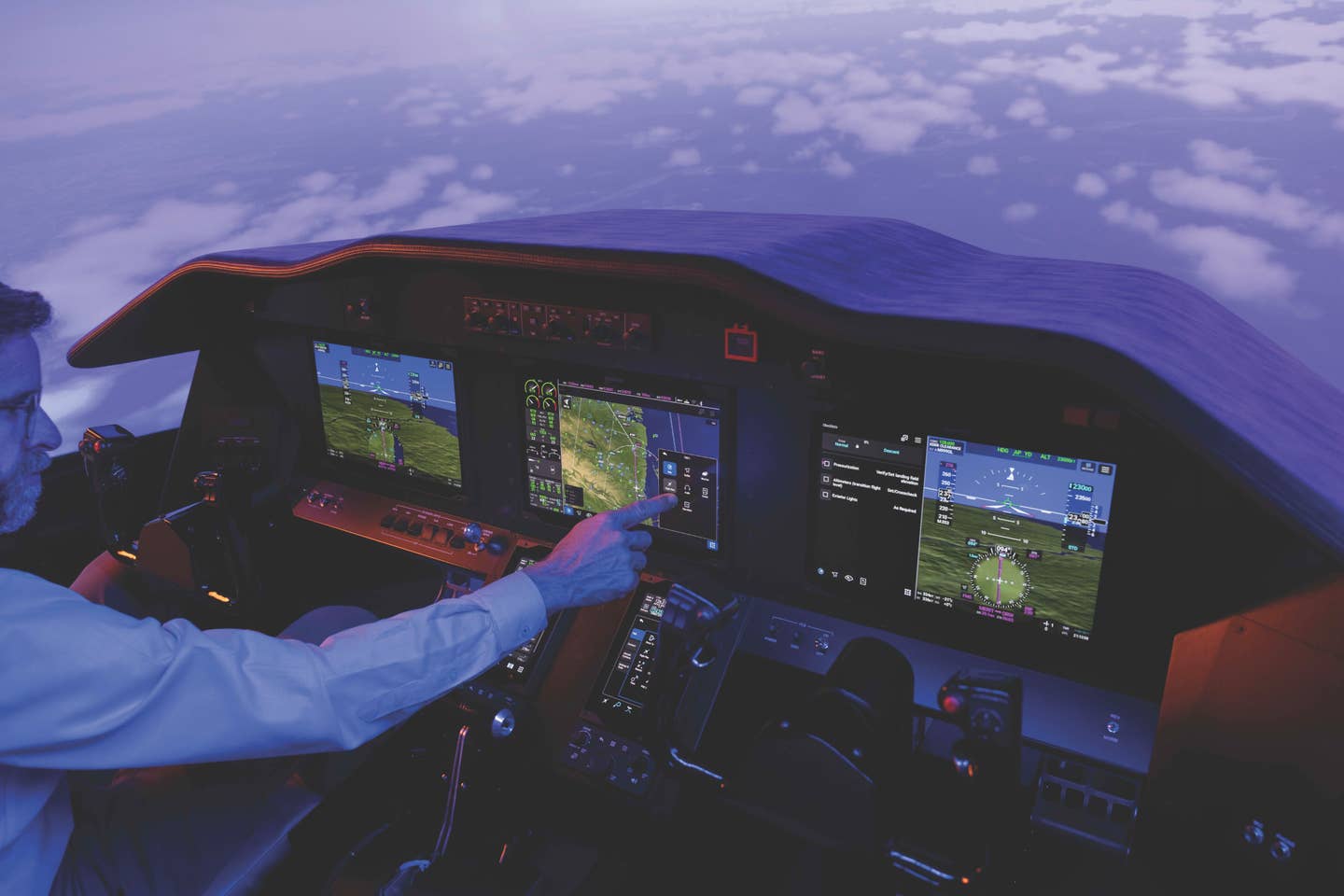Aircraft Electronics Association Convention Opens in Orlando
During the opening presentation, 33 new products from various aviation companies were introduced.

The 2023 Aircraft Electronics Association (AEA) convention was held in Orlando, Florida. [Credit: Les Abend]
On Monday, the 66th Annual Aircraft Electronics Association (AEA), conducted at the Gaylord Resort and Convention Center in Orlando, began with all the production of a Hollywood premiere.
It was my first time attending an event where aviation technicians outnumbered pilots. Throughout my airline career and my general aviation participation, I have relied on the expertise and professionalism of these folks. With the utmost respect, I felt humbled to be among the very best in the industry.
Before the opening ceremonies, the day began appropriately with the FAA. Facing a backlog of 700 Part 145 repair station applications from last year, the agency is working to improve the process. Approximately 310,000 technicians hold licensed A&P (airframe and powerplant) certificates in the U.S., with an estimated 126,000 mechanics actively turning wrenches. Because of a regulatory technicality, Safety Management Systems (SMS) have not been mandated for Part 145 repair stations as of this date.
An FAA representative introduced their Canadian counterpart, who spoke of ADS-B (Automatic Dependent Surveillance-Broadcast) implementation issues. Although dates for compliance over the next two years remain in place, Air Transport Canada has not set specific standards for equipment performance. For example, some systems were communicating with satellites that allowed for an agonizing 10 second latency on air traffic controller screens.
Mike Adamson, president and CEO of AEA, kicked off the convention with a few announcements. As billings and sales of general aviation aircraft are still headed in a positive direction, the demand for mechanics and technicians is increasing at a rapid pace. The organization is supporting AeroCareers.net, which targets mostly high school students to promote employment in the aerospace industry through education. On other subjects, AEA introduced its new third-generation logo.
Bill Hanf, AEA chairman of the board, introduced Dewey Conroy as the member of the year. Mr. Conroy is one of the founders of Pacific Coast Avionics. Avidyne was recognized as the AEA associate member for 2023. The company is a longtime AEA contributor and an innovator of aircraft avionics since its 1994 inception.
The FAA’s Orlando FAAST manager, Bob Jex, presented the Charles Taylor Master Mechanic Award to Ric Peri. Taylor was the mechanic who designed the engine for the Wright Brothers Flyer.
The award criteria require 50 years of aviation mechanic experience, professionalism, and a steadfast commitment to safety. Peri began his career in the Air Force and has been an instructor, writer, consultant, auditor, advocate, and contributor to AEA.
The remaining portion of the opening presentation was the introduction of 33 new products from various aviation companies. Highlights include:
- Communication company GoGo has improved its “Avance” system while establishing the infrastructure for the 5G network.
- Daniels Manufacturing Corporation introduced its Lace Lock product that replaces standard cable ties, improving safety for wiring installs.
- Aero LEDs Lighting introduced the Sunspot 36-4000 75-watt lens, with some of their products used by the Aeroshell Demo Team.
- Collins Aerospace presented their 5G resilient radar altimeter.
- Garmin introduced its PlaneSync app system that allows for remote communication between a tablet and the airplane, providing transmission of engine, aircraft system, and flight plan data.
- TIC presented its all-inclusive avionics test unit, which provides for testing of nav systems, antenna function, comm systems, and transponder operation.
- Texas Aerospace Technologies introduced its LCR 110- a low-cost, low-weight, small-size, IRS system available to aircraft not normally equipped, enabling RNP approaches and en route navigation for smaller aircraft.
- Aspen Avionics instituted its new 2.12 Software for the Pro Max Series units, which includes extended runway centerlines, reduced auto-max brightness from 70 to 50, and expanded fault log for dealer troubleshooting.
- Viavi Solutions introduced the PSD90-3 Fuel Quantity Test Set that also provides for fuel contamination testing.
- One Mile Up presented its updated Panel Planner for both experimental and certified aircraft, affording dealers the opportunity to generate a panel layout for customers.
- SmartSky presented its private “Intranet” platform that provides secure, discrete, 2-way data exchange from within the cabin, from aircraft systems, and from the cockpit without dependability on the world wide web.
- Universal Avionics introduced its Aperture Next enhanced vision system (EVS) that detects and identifies objects and allows for image-based navigation.
- Raptor Scientific presented its pitot/static test set unit- Raptor ADIS 3250 that can pre-load the aircraft type, program the type of tests required, and automatically prevent exceeding pressure specs that would potentially damage cockpit instruments.
Various presentations were scheduled throughout the day and the week. I attended an FAA-led ADS-B symposium, which provided some very relative information for both pilots and avionics technicians. Although geared toward avionics shops, another presentation provided a new, and perhaps disruptive, perspective on evaluating and analyzing aircraft accidents. The same presenter led a different discussion on mistakes that avionics dealers and shops make that harm their business, which was applicable to many other customer service industries.
All in all, the AEA Convention appeared to be a great success. As a retired airline pilot and now as a regular general aviation participant, the event provided me with greater insight into the other side of the instrument panel.

Sign-up for newsletters & special offers!
Get the latest FLYING stories & special offers delivered directly to your inbox






